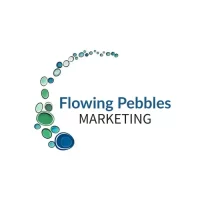Wondering how content marketing can help you grow? Let’s break it down.
In the digital age, content is king, and content marketing is the foundation of digital growth. Whether it is writing compelling blog posts, creating shareable videos, or engaging with followers on social media, content marketing is changing the game. It helps you drive traffic, generate leads, and boost brand visibility.
But where do you start? How can you tap into this powerful tool and use it to boost digital growth for your small business?
In this content marketing guide, we will walk you through everything you need to know. We will break it down into easy, actionable steps to help you grow your business online, even if you are just starting out.
What is Content Marketing?
In simple terms, content marketing is about creating and sharing valuable, relevant, and consistent content to attract, engage, and connect customers. It can help you stay in front of consumers, even when they are growing more skeptical of intrusive advertising and brand pitches.
Rather than pushing a product or service, content marketing is your way of providing value to the audience. The concept is simple. You offer useful content that resonates with your audience and speaks to their needs, interests, and pain points.
The goal? To build trust and drive growth for your business.
Why Content Marketing is Crucial for Small Businesses
Content marketing is not just for large companies with big budgets. As one of the most cost-effective ways for small businesses to provide value and drive consistent traffic and leads, it is a huge opportunity. Therefore, a well-planned content strategy lets you level the playing field for a fraction of the budget that large corporations spend on advertising.
Here are some key reasons why content marketing is especially important for small businesses:
- Builds Trust: Sharing helpful content can portray you as an expert to your audience and make them more likely to choose your business over competitors.
- Drives Traffic: Quality content can boost your visibility in search engines, meaning more people will find you online.
- Helps You Stand Out: The right content can position your business as a go-to resource in your industry, increasing your brand authority.
- Cost-Effective: With minimal resources, valuable content can keep bringing in new customers long-term.

Types of Content to Use in Digital Marketing
There is no one-size-fits-all strategy in content marketing. Different types of content work for different goals. So, it is essential that you mix things up to keep your audience engaged.
Here are some common types of content you can use:
Blog Posts
Blogging is one of the easiest and most effective ways to establish your expertise and boost your website’s SEO, or Search Engine Optimization. By writing posts that address common questions or challenges your audience faces, you can create content that is both valuable and discoverable by search engines. Some blog ideas for small businesses are how-to guides, customer stories, product demos, and industry insights. Add bonus points if you can keep your blogs fun and engaging!
Video Content
Video grabs attention, keeps people engaged, and is highly shareable. If you have not yet used any, think about creating short, informative videos (like product demos, tutorials, or behind-the-scenes looks at your business). These videos can be shared on multiple platforms such as your website, social media, or YouTube channel. They help personalize your brand and build deeper connections with your audience.
Social Media Posts
Social media is where your audience hangs out. Whether you are on Instagram, Facebook, LinkedIn, or TikTok, social platforms offer a real-time opportunity to showcase your brand personality and directly communicate with customers. Share helpful tips, customer stories and testimonials, promotions, or even user-generated content to keep your audience engaged.
Email Newsletters
If you have heard email marketing is dead, it is not! It is still a powerful tool in your content marketing arsenal. Regularly sending helpful newsletters provides a direct and personalized way to keep your audience in the loop and nurture your relationship with them. Plus, it gives you control over the message. You can share blog updates, exclusive deals, or upcoming events. It is a must for keeping your business top of mind.
Infographics & Visual Content
Visuals speak louder than words! That could be because humans are inherently visual creatures. Infographics, charts, and images simplify complex information and make it more shareable. These can be particularly useful if you want to break down data or explain processes in a simple, visually appealing way.

How Content Marketing Drives Results
Creating content is an upfront investment but it pays off. It can be cost-effective over time as content continues to deliver value long after it is published.
Here is how content marketing helps small businesses achieve real growth:
Brand Awareness
Content marketing is a strategy, and when done well, it can put your brand in front of your audience. With every piece of branded content an individual sees, they become more familiar with your brand. This in turn fosters growth by creating a strong connection with the audience and driving customer engagement.
Customer Loyalty and Retention
When you have regularly updated content, your audience is more likely to be engaged and coming back to buy. Loyalty goes beyond buying to customers acting as your ambassadors. They promote your products and services, sharing content and even producing a goldmine with user generated content.
Improved Search Engine Rankings
When you create valuable, keyword-optimized content around the topics your audience cares about, you naturally improve search rankings and visibility. Better rankings lead to more traffic, which means more potential customers.
Increased Engagement
People love valuable content. Whether it is a blog post or an Instagram story, great content keeps people coming back for more. Over time, these interactions deepen your relationship with your audience, making them more likely to buy from you when the time comes.
Lead Generation
Content marketing is an effective tool for generating leads. With calls-to-actions, you can convert visitors to leads. A popular way of doing this is by offering downloadable content (like eBooks or whitepapers) in exchange for visitors’ contact information. From there, you can nurture these leads through email marketing and personalized content.
Higher Conversion Rates
By consistently providing value, content marketing helps build trust over time. This trust leads to higher conversion rates, whether that is making a sale, booking a consultation, or getting someone to sign up for your newsletter.

Your First Steps to Content Marketing
Now that you understand content marketing and how it can help your business grow online, here’s a quick way to begin:
Step 1: Define Your Goals
What do you want to achieve with content marketing? Do you want to generate leads? Build brand awareness? Educate your audience? Identifying your goals will help guide your content strategy.
Before creating any content, clearly define what you want to achieve. Your goal will shape your strategy, content type, and success metrics. Common content marketing goals include:
- Increasing brand awareness
- Driving website traffic
- Generating leads or sales
- Educating your audience
- Building customer loyalty
Be specific and align your goals with overall business objectives. Use SMART criteria (Specific, Measurable, Achievable, Relevant, Time-bound) to ensure clarity and focus.
Step 2: Know Your Audience
Who are you writing for? What challenges do they face? What kind of content will resonate with them? Understanding your audience is key to creating content that speaks directly to their needs.
Identify who they are, what they care about, and how they consume information. Key actions include:
- Creating buyer personas (demographics, interests, pain points)
- Analyzing audience behavior through data and feedback
- Researching where they spend time online (social media, forums, search)
- Identifying their challenges and goals
When you know your audience well, you can craft targeted content that attracts, engages, and connects to ultimately drive conversions.
Step 3: Plan Your Content
What types of content will you create? A blog series? Social media posts? A video series Effective content marketing starts with a solid plan. For example, start with one content type (e.g. blog posts, videos, infographics) or platform (e.g. WordPress, Instagram, YouTube) and gradually expand.
This step involves mapping out what content you’ll create, when, and how it aligns with your goals and audience. Key components include:
- Choosing content types and where you want to publish it
- Developing a content calendar for consistent publishing
- Aligning topics with buyer journey stages (awareness, consideration, decision)
- Assigning responsibilities and setting deadlines
A well-structured plan keeps your content organized, purposeful, and easier to execute at scale.
Step 4: Create and Share
Now it’s time to bring your plan to life. Focus on producing high-quality, valuable content tailored to your audience and goals.
Begin by creating content. Keep it simple, relevant, and consistent. Key points to cover:
- Craft content that is clear, engaging, and aligned with your brand voice
- Optimize for SEO to improve visibility in search engines
- Include visuals and calls-to-action to boost engagement
- Share content across relevant channels (blog, email, social media, etc.)
- Tailor your message to each platform and audience segment
Consistent creation and smart distribution help maximize reach and impact.
Step 5: Monitor Performance and Adjust
Content marketing is a long-term game. After publishing your content, you will want to know if it is working. Which posts are getting the most traffic? Which ones are converting?
To understand how your content is performing, you need to track performance. Use data to assess what is effective and where to improve. Key steps include:
- Define KPIs based on your goals (traffic, leads, engagement, conversions)
- Use analytics tools (like Google Analytics, social insights, email reports)
- Review performance regularly and look for trends
- Identify top-performing content and underperformers
- Adjust your strategy based on insights
Measuring success ensures your content stays results-driven and continuously improves over time.
 Common Challenges to Overcome
Common Challenges to Overcome
As you work through the initial steps of content marketing, you may run into challenges along the way. The most common ones include:
- Time and Resources
- Brainstorming Content Ideas
- Maintaining Consistency
- Handling Content Fatigue
- Balancing Quality Over Quantity
- Understanding Your Audience
- Standing Out in a Crowded Market
- Measuring ROI
- Staying Current with Trends and Algorithms
- Maintaining a Budget Suitable for Your Investment
The key is persistence and adapting. Be open to learning what works best for your business. Content marketing is not a one-time effort, but a long-term strategy that gets easier over time.
Keep Growing and Adapting
It’s important to remember that results don’t happen overnight. Consider your budget and business goals, then create a plan that strikes a balance between what you can realistically do and what you want to achieve. Start small, track your progress, and adjust as needed.
While the investment of time and resources may feel slow at first, it will pay off as your brand grows and your audience builds trust in what you offer.
Starting small is perfectly fine, and many businesses have seen big results with consistent, focused effort. Don’t be discouraged by the challenges. With persistence and adaptation, you’ll continue to grow and improve.
Like what you read? There’s more where that came from. Sign up for the newsletter and get content marketing tips that actually make sense.



